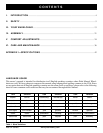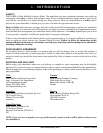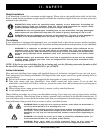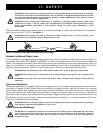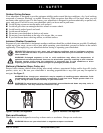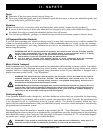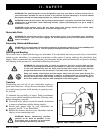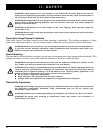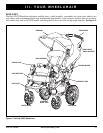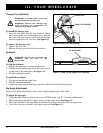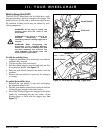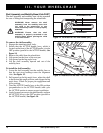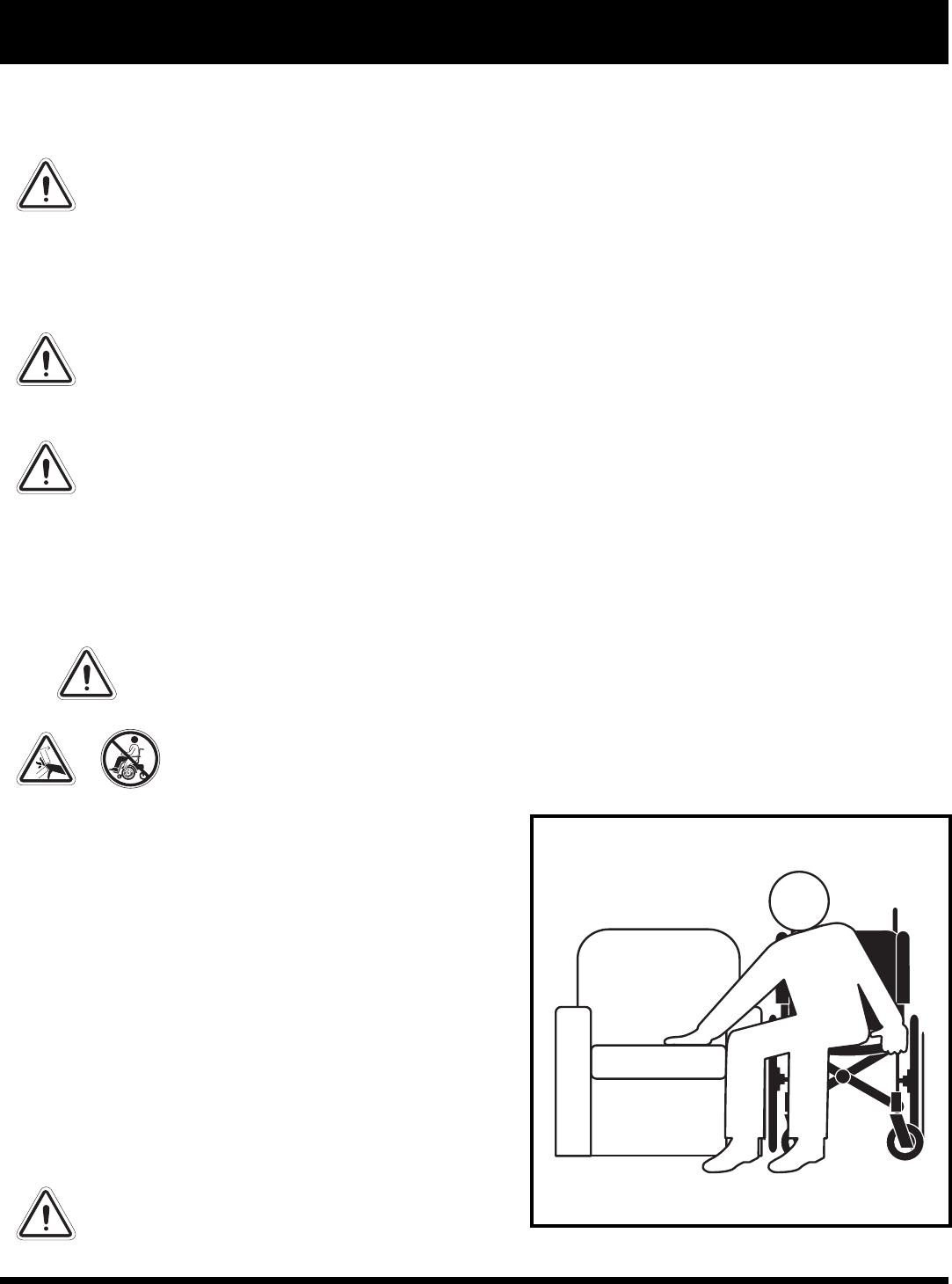
Kids UP Series www.pridemobility.com 11
WARNING! The positioning belt is not designed for use as a seat belt in a motor vehicle. Nor is
your wheelchair suitable for use as a seat in any vehicle. Anyone traveling in a vehicle should
be properly belted into seats approved by the vehicle manufacturer.
WARNING! Avoid serious injury. Always use positioning belt to prevent the child from falling or
slipping out of wheelchair. After fastening buckles, adjust positioning belt to get a snug fit
around the child.
WARNING! Avoid serious injury. Do not place items with strings around your child’s neck,
suspend strings from the wheelchair, or attach strings to toys.
Removable Parts
WARNING! Do not attempt to lift or move a wheelchair by any of its removable parts, including
the armrests, seat, tray, and front riggings. Do not attempt to pick up the wheelchair while the
seat is occupied.
Preventing Unintended Movement
WARNING! If you anticipate the child being seated in a stationary position for an extended period
of time, apply the wheel locks. This will prevent unexpected chair movement.
Reaching and Bending
Never reach, lean, or bend while driving your wheelchair. If it is absolutely necessary to reach, lean, or bend while
seated on your wheelchair, it is important to maintain a stable center of gravity and keep the wheelchair from
tipping. Pride recommends that the wheelchair user determine his/her personal limitations and practice bending
and reaching in the presence of a qualified healthcare professional.
WARNING! Do not bend, lean, or reach for objects if you have to pick them up from
the floor by reaching down between your knees or if you have to reach over the back
of the seat. Movements such as these may change your center of gravity and the
weight distribution of the wheelchair. This may cause your wheelchair to tip.
Keep your hands, clothing and all other object away from the tires when driving. Do
not allow any personal belongings or objects to drag behind the wheelchair when
driving. Be aware that loose fitting clothing or other objects can become caught in
drive tires and/or they may become entangled in the running gear.
II. SAFETY
Transfers
Transferring onto and off of your wheelchair requires a
good sense of balance. Always have an attendant or health-
care professional present while learning to properly trans-
fer yourself.
To eliminate the possibility of injury, Pride recommends
that you or a trained attendant perform the following tasks
before attempting a transfer:
Turn both caster wheels toward the transfer destination
to improve wheelchair stability during transfer.
Ensure both wheel locks on your wheelchair are
engaged. See III. “Your Wheelchair.”
Reduce the distance between your wheelchair and the
object you are transferring onto.
WARNING! Before transferring, position
yourself as far back as possible in the
wheelchair seat to prevent the wheelchair
from tipping forward during transfer.
Figure 4. Ideal Transfer Position



